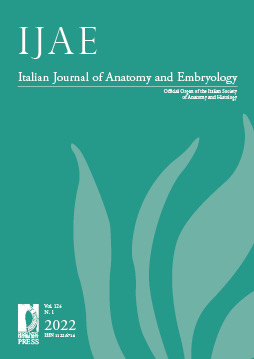Ancient Egyptian paleopathology – The population of the tomb of IPI, necropolis of Dahshur-South
Published 2022-09-21
Keywords
- paleopathology,
- trauma,
- inflammation,
- tuberculosis,
- malignant bone tumour
- vitamin deficiency ...More
How to Cite
Abstract
This study investigated the human remains of the tomb complex built by the ancient Egyptian high ranking official “Ipi” (4th Dynasty, ca. 2700-2600 BCE) in the Lower Egyptian necropolis of Dahshur-South. Beyond burials from the tomb owner and his family from the Old Kingdom, the complex was re-used until the Late Period. The excavated material presented the human remains of at least 73 individuals. Unfortunately, initial excavations had collected and mixed individual burials, so that individual identification in most skeletons was not possible. Later excavations presented complete individual burials. The custom typical of the New Kingdom until the Late Period of transnasal trephination offered, even with the mixed burials, a collection of 23 disturbed adults’ skulls (New Kingdom until Late Period) and 33 skulls of undisturbed adults (Old Kingdom). In these two groups sex ratios were fairly balanced. Most adult individuals died between 20 to 30 years. There were relatively few immature burials and a single skeleton was that of a 7th lunar month fetus, an obvious stillbirth; total number of immature was 10 (17.8%). Numerous paleopathological observations indicated the considerable impact of living conditions and health. There were 12 cases with healed traumatic sequelae including one with a healed ankylosed fracture of the knee and another with a fracture of the humerus, three cases of nonspecific osteomyelitis, three cases highly suggestive of spinal tuberculosis, one with evidence of metabolic bone disease from vitamin deficiency, and two cases with malignant bone tumours; one with multiple metastases of the vertebrae, and the other chondrosarcoma of the pelvis. Also, typical pathological changes were seen in teeth and jaws. Finally, the rate of osteoarthrosis of large joints and that of spondylosis suggest significant work load. These findings indicate various ailments either due to heavy work load (arthrosis and spondylosis, traumatic sequelae), or to the living conditions (tooth abrasion by sand ingestion; tuberculosis due to foundation of settlements and townships), metabolic osteopathies possibly due to parasitic diseases and/ or malnutrition. These skeletal remains therefore contribute to our understanding of ancient Egyptian life and diseases.


